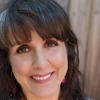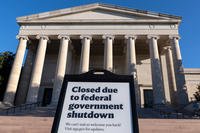Force Protection Condition (FPCON) is a system used by the Department of Defense to help assess and respond to terrorist threats against U.S. personnel and facilities.
What Is FPCON?
This FPCON system gives commanders a set of actions to take to keep installations safe and helps different DoD branches coordinate their efforts. The system helps commanders adjust security based on real-time intelligence to keep personnel and facilities safe.
It is designed to help the commander to deter, detect, delay, deny and defend the installation they have jurisdiction over.
FPCON levels range from Normal, when there's no significant threat, to Delta, the highest level, used when there's an immediate, specific danger. As the threat level increases, security gets tighter, with measures such as restricted access, more patrols and thorough screening.
You'd typically see FPCON levels in action not only at military bases, but also government buildings, embassies, airports and public events, depending on how serious the threat is.
How is FPCON different from DEFCON? Although both are used by the military, they focus on different things. FPCON is all about protecting U.S. personnel and facilities from terrorist threats, with guidelines on how to adjust security when those threats are present. DEFCON, on the other hand, concerns overall military readiness in the face of potential national security threats or war.
Read More: DEFCON Levels
In other words, while FPCON helps commanders deal with terrorism-related risks, DEFCON is more about preparing for military conflict and ensuring the military is ready to respond to those kinds of threats.
History of FPCON
FPCON was put into place in June 1996 as part of a bigger push to improve security after the tragic Khobar Towers bombing in Saudi Arabia, where 19 U.S. service members lost their lives.
Before FPCON, the military used a mix of different systems to address security threats, such as THREATCON, but they were inconsistent and could vary depending on the branch or location. FPCON was designed to standardize things and make security responses more unified.
What Are the FPCON Levels?
The DoD FPCON has five levels, each one representing a step up in the protective measures taken to prevent terrorism, with the security getting tighter as the threat increases.
- Normal: Used when there's a general, global threat of possible terrorism, requiring routine security that can be maintained long term.
- Alpha: Applied when there's an increased, unpredictable threat against personnel or facilities, with measures that can be sustained indefinitely.
- Bravo: Used when there's a more predictable terrorist threat. Maintaining Bravo for a long time may impact operations and relationships with local authorities.
- Charlie: Used when there's intelligence or an incident suggesting terrorist activity is likely. Prolonged use of Charlie may cause disruptions to unit activities.
- Delta: Applied when a terrorist attack has occurred nearby or there's imminent intelligence of an attack at a specific location. Delta is a localized condition and usually short term.
FPCON Normal
FPCON Normal is used when there's a general, ongoing threat of terrorism around the world, but nothing too specific or immediate. It's a routine level of security that can be maintained indefinitely. At installations, you'll see basic security measures such as access control in place -- meaning people and vehicles are still checked as they come in. This is a standard precaution since there's always some level of threat, even though it's not necessarily urgent at the moment. The goal is to deter potential threats without causing disruptions.
FPCON Normal is the "Deter" level.
FPCON Alpha
FPCON Alpha is used when there's an increased general threat of terrorism, but the specifics aren't clear. For example, the U.S. government may not be certain where or when an attack might happen. At the Alpha level, security steps are stepped up with the intention that the military is ready for anything, and these measures can be kept in place for as long as needed.
At installations, you might see more patrols, increased checks at entry points and a heightened awareness, but there's still no specific target or immediate danger. The main focus here is on scoping out any potential threats early.
Alpha, similar to a code yellow, is the "Detect" level, and it means a threat is unpredictable.
FPCON Bravo
FPCON Bravo is used when there's a more predictable or specific threat of terrorism, so the security measures are ramped up even further. This means there's a clearer idea of where the threat might be or who it could target.
On base, you'll see even tighter security, including more thorough checks at entry points, more patrols, and potentially restricted access to certain areas. However, keeping this level of security for too long could affect normal operations and relationships with local authorities, as it can be more disruptive. The focus here is to fend off any potential attacks by staying alert to the threat.
Bravo is the "Delay" level.
FPCON Charlie
FPCON Charlie is used when there's solid information or an incident suggesting that a terrorist attack is likely to happen soon, and it's focused on a specific target. It sets into motion the Continuity of Operations plans.
At installations, you'll see even more intense security, including tighter access controls, restricted areas and possibly more checkpoints. The goal is to bar any potential threats from getting through. The level of potential disruption, of course, increases at the Charlie level. Base employees considered "nonessential" may be asked to go home.
Charlie is the "Deny" level and means an incident has occurred or a terrorist act is imminent.
FPCON Delta
FPCON Delta is the highest level of security and is used when a terrorist attack has already happened nearby or when there's immediate intelligence that an attack is about to take place at a specific location. It's a very localized condition and usually only lasts for a short period of time, because it's meant to handle an immediate, serious threat.
At installations, security is extremely tight. Access is limited to only essential personnel, and there are likely major restrictions on movement and access to certain areas.
Delta is the "Defend" level and indicates a direct attack or a threat to a specific location.
FPCON Enhancement
When you see an FPCON level with a "+" added, such as FPCON Bravo+ or FPCON Charlie+, it means the security measures at that level are being bumped up even more due to a more immediate or serious threat.
For military installations, this could mean extra screenings, more patrols or tighter controls on who can enter. It's basically a way to add an extra layer of protection when the situation calls for it, making sure everything stays secure in the face of a bigger risk.
Who Determines the FPCON Level?
The FPCON level for an installation is generally set by U.S. Northern Command, but local commanders have the authority to raise the level if they believe there's a credible threat. They use available threat intelligence to make informed decisions. Updates on the current FPCON level are typically shared through a Commander's Access Channel and other formal communication methods.
A key thing to know is that FPCON levels aren't always progressive. The level can jump directly to a higher one without going through the intermediate stages. Once the threat is over, the installation FPCON level will return to its baseline. While commanders can raise the FPCON level as needed, they can't lower it once it's set.
After the immediate post-9/11 period, the baseline FPCON level was adjusted to Bravo. This became the new "normal" security posture for many installations, as it reflected an ongoing but less immediate threat. Since then, the military has generally maintained FPCON Bravo as the baseline level, but it can fluctuate up or down based on specific threats or intelligence.
"FPCON Normal is a condition we will, in all likelihood, never see again in this lifetime," Capt. Bob Rutherford, commanding officer of Naval Air Station Lemoore, said in 2003 when addressing the impact of Operation Iraqi Freedom.
Did this prediction turn out to be true? In many ways, yes. Since the early 2000s, FPCON Normal has rarely been implemented at military installations. The global threat environment, especially concerning terrorism, has caused military facilities to maintain FPCON Bravo or higher for much of the time.
When Are FPCON Levels Raised?
FPCON levels are raised when there's a real or growing threat, such as a potential terrorist attack or other hostile actions aimed at a specific place. This could happen if there's new intel about a nearby danger, a recent attack in the area or if things just feel more tense.
For example, if something major happens, like a bombing elsewhere, a commander might raise the level to boost security. It's all about staying ahead of the threat and protecting everyone on base. Once the risk dies down, the level goes back to normal.
Reasons for FPCON changes at specific military installations "could range from a suspicious phone call to an unclaimed package sitting in a public area, which could potentially contain an explosive device," Garth Freund, an 88th Air Base Wing exercise planner, said in 2021.
The levels can be updated multiple times in a day, depending on new information or threats. This makes security more flexible and responsive to changing situations.
How Do I Find Out an Installation's FPCON Level?
To find out an installation's current FPCON level, you can usually check the entrance gates. Each installation will typically have the FPCON level posted at every entrance, so anyone entering can see what security measures are in place. This helps ensure that everyone is aware of the current threat level and the necessary precautions.
Additionally, updates about the FPCON level may also be shared through the Commander's Access Channel and other communication channels.
Keep in mind that it might not always be immediately clear what the FPCON level means for base operations unless you're connected to official channels or see a drastic change in security.
How Does the FPCON Affect Access to an Installation?
Security officials, emergency services and the antiterrorism team all have specific duties to ensure safety, from increasing stand-off distances around buildings to enforcing tighter access restrictions.
When an FPCON level is set or raised, different access levels and security measures go into effect depending on the situation. If the level changes, whether it's a real threat or just a drill, you might notice increased security at the gates, additional personnel or even lane closures. At the higher FPCON levels, 100% identification checks become standard at the gates.
To give an example, if an Army garrison moves to FPCON Charlie, you may see more security checks, longer wait times and possibly gate closures as a result. It could even mean restricted access to a base, especially for nonessential personnel.
If you're stuck in a long line at the gate, it's best to try to come back later if you can.
Some services, such as the commissary, exchange, medical appointments and pharmacy hours, might be affected during this time.
At higher levels, the Mission Essential Personnel (MEP) plan might be activated, meaning nonessential personnel may be sent home, while visitors, vendors and most contractors will have to follow specific egress procedures. Keep an eye on official updates through the base information line or social media for the latest info.
FPCON's Normal, Alpha and Bravo Access
At FPCON Normal, Alpha and Bravo, the common goal is to tighten security based on the level of threat. While security measures are generally routine at Normal, they become more thorough at Alpha and Bravo as the threat becomes more specific or likely.
At all three levels, security is more vigilant, and ID checks are standard to ensure only authorized personnel can enter. Access is usually pretty open, especially at Normal, but as the levels rise, you might see things such as bag checks, limited access points or longer wait times. Visitors, contractors and essential personnel are still allowed in, but as the threat level increases, restrictions on nonessential personnel might come into play. Essentially, these FPCON levels all ramp up security, with the readiness for even more drastic measures if the situation escalates further.
FPCON Charlie Access
At FPCON Charlie, the threat is more immediate, so access gets a lot more restricted. Only mission-essential personnel, their families and others who are specifically authorized can get in. Security checks become much stricter, and some areas might be completely closed off. Expect longer waits at the gates with more thorough checks, and basically, only people who absolutely need to be there will be allowed access.
FPCON Delta Access
When things move to FPCON Delta, access is even tighter. Only essential personnel, such as key staff and security forces, are allowed in. Families of service members are typically still allowed, but overall, access is super limited to keep the place secure. There will be even more intense security, fewer entry points and a strong focus on protecting the most important functions.
The scene at Grand Forks Air Force Base in North Dakota on Sept. 11, 2001, offers just one dramatic example of FPCON elevation to the highest level.
Within moments of the terror attacks, the alert at the installation soared to the highest FPCON level, Delta. On-base amenities such as eateries, the exchange store and day care shut down, the Grand Forks Herald newspaper reported. Most civilian workers were sent home. The commissary stayed open, but no one could enter without being searched. And at the gates, the line of vehicles waiting to get in grew up to an hour long.
"Military police, each carrying an M-16 rifle and a 9mm pistol, scoured each vehicle inside, outside, underneath," according to the account. "Only those with military identification cards were admitted onto the base."
In summary, FPCON levels are like the security settings at a high-stakes event. They adjust depending on the threat -- from regular security checks when everything's calm, to much tighter controls when danger's near.
Want to Know More About the Military?
Be sure to get the latest news about the U.S. military, as well as critical info about how to join and all the benefits of service. Subscribe to Military.com and receive customized updates delivered straight to your inbox.
















